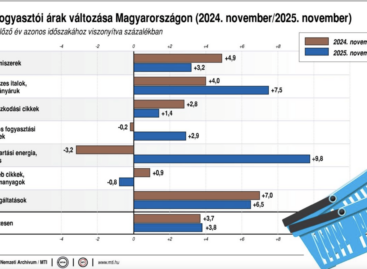Price hikes threaten Croatia’s tourism competitiveness
Over the past three years, tourism prices in Croatia have increased by 50 percent, causing the country to fall behind its main competitors, Spain and Greece. The increase in costs is not only reducing the number of guest nights, but also the willingness of tourists to spend, writes Pénzcentrum.
 While Croatia was previously known as a particularly cost-effective destination among German, Austrian, Czech and Italian tourists, the price increases in recent years have severely reduced traffic. The fees for tourism services have increased by an average of 50 percent since 2021, while in competing countries – such as Spain and Greece – the same rate was only 15-20 percent.
While Croatia was previously known as a particularly cost-effective destination among German, Austrian, Czech and Italian tourists, the price increases in recent years have severely reduced traffic. The fees for tourism services have increased by an average of 50 percent since 2021, while in competing countries – such as Spain and Greece – the same rate was only 15-20 percent.
The weakness of Croatian tourism is mainly due to the increase in hospitality costs: inflation, labor shortages and global energy price increases all play a role. Paradoxically, energy prices are still low in the country, and the tourist VAT is also favorable (13%), despite this, the price level has noticeably deviated from the previously usual level.
The decline can also be seen in numbers: in the peak season last year, the total spending of foreign tourists visiting Croatia decreased by 0.7 percent compared to the previous year. This is particularly alarming, since the number of guest nights is stagnating, so the decline in spending can no longer be explained solely by the decrease in the number of visitors.
On Tripadvisor and other review sites, more and more tourists are complaining about sudden price increases: some say that the price of sun loungers has reached 25-30 euros, and restaurant services have also increased by two to three times compared to the years before the pandemic. However, not all guests perceived the change as so drastic: one British tourist, for example, reported that he barely noticed a difference in price levels between Rovinj and Hvar compared to last year.
Croatia’s long-term competitiveness may depend on retaining mid-range tourists. This would require not only keeping accommodation and catering prices within reasonable limits, but also improving the value for money of services. Based on current trends, positioning as a premium destination can be a risky strategy, especially in a market where demand is increasingly price-sensitive.
Related news
The roast goose flies into your mouth
🎧 Hallgasd a cikket: Lejátszás Szünet Folytatás Leállítás Nyelv: Auto…
Read more >Ryanair is ending its subscription service
🎧 Hallgasd a cikket: Lejátszás Szünet Folytatás Leállítás Nyelv: Auto…
Read more >Action Achieves 17% Growth In 9M, Plans Croatian Launch
🎧 Hallgasd a cikket: Lejátszás Szünet Folytatás Leállítás Nyelv: Auto…
Read more >Related news
The Hungarian Confederation of Economic Workers also spoke out regarding the inflation data
🎧 Hallgasd a cikket: Lejátszás Szünet Folytatás Leállítás Nyelv: Auto…
Read more >KSH: in November, consumer prices exceeded the values of the same month of the previous year by an average of 3.8 percent
🎧 Hallgasd a cikket: Lejátszás Szünet Folytatás Leállítás Nyelv: Auto…
Read more >In addition to jelly and marzipan Christmas candy, there are more and more specially flavored Christmas desserts on offer
🎧 Hallgasd a cikket: Lejátszás Szünet Folytatás Leállítás Nyelv: Auto…
Read more >







